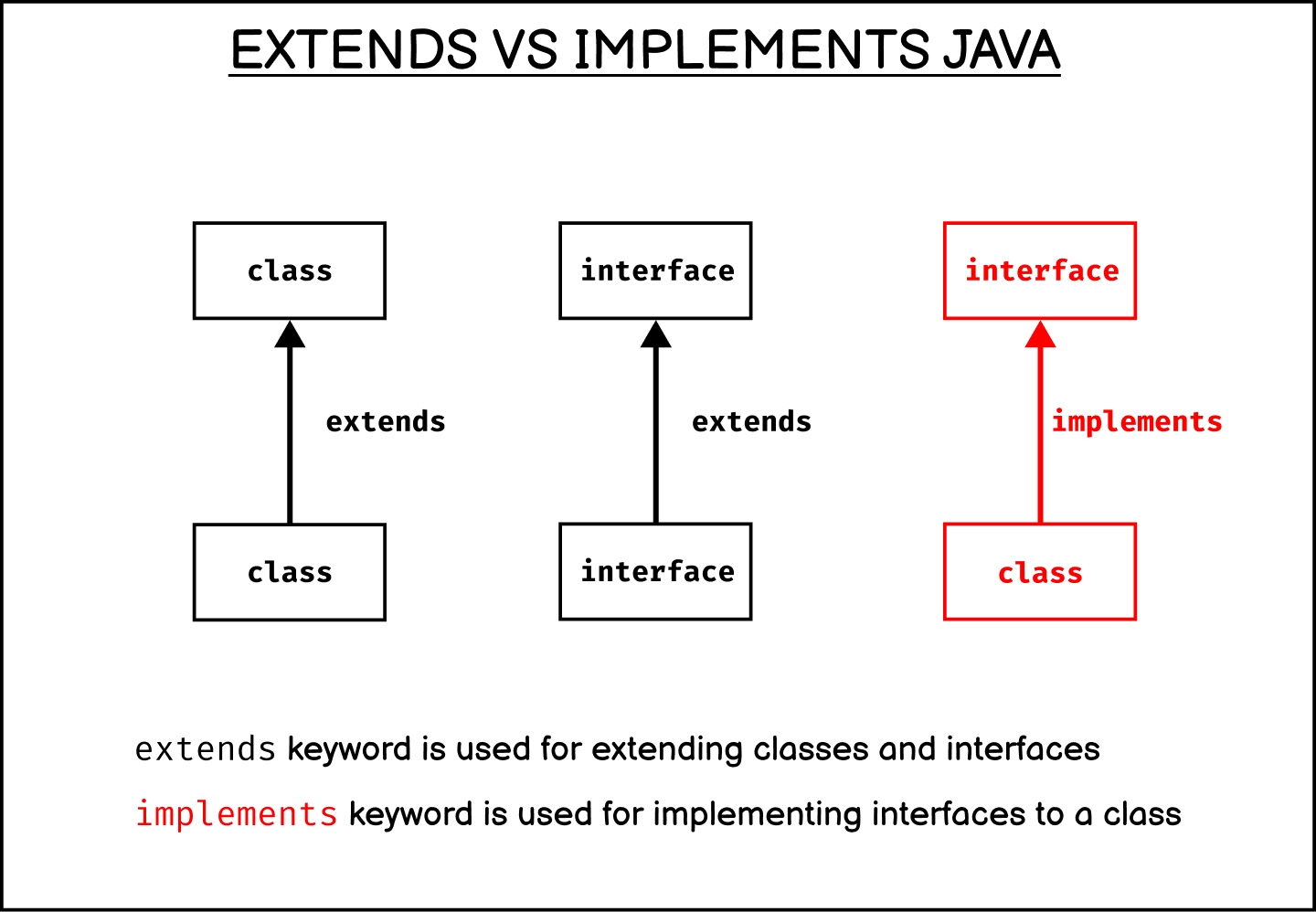
Java Design is a bit different then c++ design but after doing several java program's you will become just as good at using multiple interfaces as you are at using multiple inheritance.Įach subclass has to define it's own implementation because each subclass may perform the operation slightly differently. That way you can have a specific class implement a generic interface and then treat every specific class that implements that generic interface the same. The reason you implement an interface in java is so that you guarantee that class has those methods. Own implementation then what is the use of inheriting it? Interfaces are like pure virtual classes in c++.īut in interface concept if each derived class(es) has to define its

Like the original author did, you can still do multiple inheritance in java you just must use interfaces. Too, then those class(es) will inherit the parent class and use it. When I switched from c++ to java I had this same feeling but now that I been working with java for a while it all kinda makes sense.ġ.what I thought about inheritance is having some methods in parentĬlass, and whenever the same methods are needed in other class(es) In that post, they have used multiple inheritance in c++ and converted to interfaces in java.ġ.what I thought about inheritance is having some methods in parent class, and whenever the same methods are needed in other class(es) too, then those class(es) will inherit the parent class and use it.īut in interface concept if each derived class(es) has to define its own implementation then what is the use of inheriting it?Ģ.If we have to provide own implementation then why not we define that method in the derived class(es) itself. reason? Thank for this good explanation Thank you

Why this must be there? Why "Remember, we must write each class's own implementation for each method in the interface. Why in the Peagus class public void horseNoise() Necessary to use the implement the same method in the derived class There is no connection to Animal from Bird and horse why? Is it

Hi, Good Explanation very much helpful In the uml diagram for java I have a same doubt as the programstudent had. Reproduced courtesy of Bruce Eckel, MindView, Inc.When I surfing for the information about "Achieving multiple inheritance via interface", I came across this link. Using the same method names in different interfaces that are intended to be combined generally causes confusion in the readability of the code, as well. InterfaceCollision.java:23: f( ) in C cannot implement f( ) in I1 attempting to use incompatible return type found : int required: void InterfaceCollision.java:24: interfaces I3 and I1 are incompatible both define f( ), but with different return type When the last two lines are uncommented, the error messages say it all: The difficulty occurs because overriding, implementation, and overloading get unpleasantly mixed together, and overloaded methods cannot differ only by return type. : c08:Adventure.java // Multiple interfaces. Interface, Inheritance, and Composition Example Contract Enforcement using Interfaces Java and Multiple Inheritance Java and Multiple Inheritance, Cont. The following example shows a concrete class combined with several interfaces to produce a new class: You can have as many interfaces as you want each one becomes an independent type that you can upcast to. You place all the interface names after the implements keyword and separate them with commas. All the rest of the base elements must be interfaces. If you do inherit from a non- interface, you can inherit from only one.

In a derived class, you aren’t forced to have a base class that is either an abstract or “concrete” (one with no abstract methods). If a class implements multiple interfaces, or an interface extends multiple interfaces, it is known as multiple inheritance. In Java, you can perform the same act, but only one of the classes can have an implementation, so the problems seen in C++ do not occur with Java when combining multiple interfaces: This is valuable because there are times when you need to say “An x is an a and a b and a c.” In C++, this act of combining multiple class interfaces is called multiple inheritance, and it carries some rather sticky baggage because each class can have an implementation. By implementing multiple interfaces that use defender methods, you could effectively, in a way, extend the behavior of two interface objects. Because an interface has no implementation at all-that is, there is no storage associated with an interface-there’s nothing to prevent many interfaces from being combined. Java 1.8 (as well as Groovy and Scala) has a thing called 'Interface Defender Methods', which are interfaces with pre-defined default method bodies. Java does not allow multiple inheritance directly through the. The interface isn’t simply a “more pure” form of abstract class. Multiple inheritance: If one class extending more than one class is called Multiple inheritance.


 0 kommentar(er)
0 kommentar(er)
